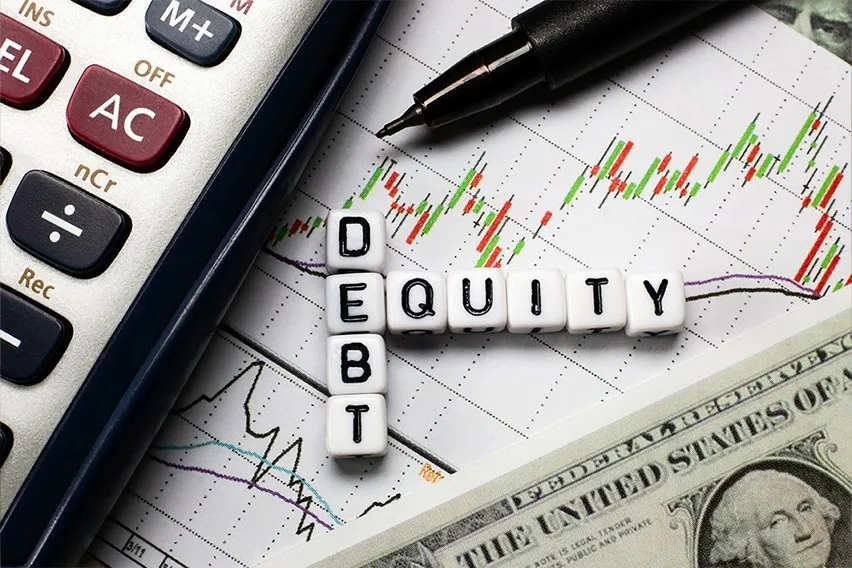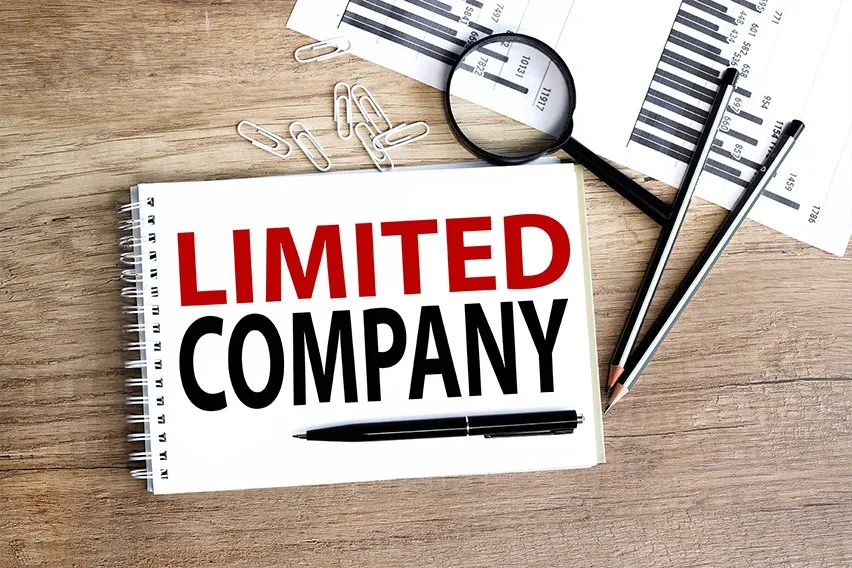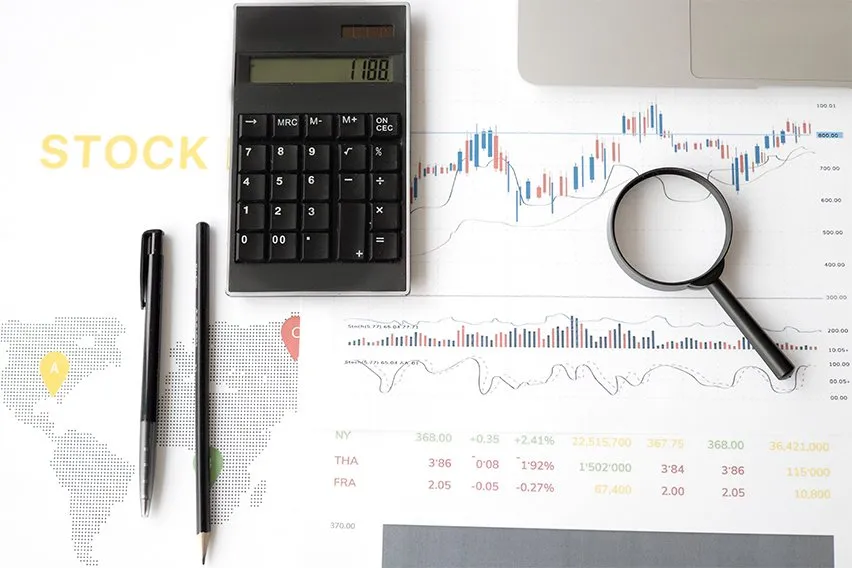What Is Debt-to-Equity-Ratio & How to Calculate It?

The debt-to-equity ratio is another important tool in corporate finance assessment. It demonstrates a company’s financial leverage by using basic information from its balance sheet. This financial ratio reveals how much of a business’s operations is funded by debt and how much by entirely company-owned money. It’s taken as an indicator of financial stability.
Here’s What We’ll Cover:
What’s the Difference Between Equity and an Asset?
Example of Debt-to-Equity Ratio
What Is a Good Debt-to-Equity Ratio?
Problems With the Debt-to-Equity Ratio
How Can I Reduce My Business’s Debt-to-Equity Ratio?
What Is Debt?
Business debt, or liability, is anything that you owe or anything that’s unpaid. This means any financial liabilities you’ve taken on, like a small business loan, mortgage or line of credit. Anything you have to pay back – even that unofficial loan from a mate – is classified as being part of your business’s debt obligations.

What Is Equity?
Your company’s equity is the total value of its assets, after deducting liabilities. It’s what it wholly owns, once all debts are settled. It’s often referred to as ‘shareholder equity’.
What’s the Difference Between Equity and an Asset?
There are a few important distinctions between equity and assets. Essentially, equity is an investment in the company and assets are owned in order to generate operating revenue.
Other key distinctions are listed here:
Assets
- Assets are cash, property, plant and machinery, other equipment, intangibles, account receivables and deferred taxes. They are the resources necessary to manufacture products, provide services and make operating revenue.
- The value of your assets are calculated by comparing the totals of your current liabilities and assets as they appear on your balance sheet. In this document, fixed assets are ‘gross fixed assets’ and are put together with their accumulated depreciation to work out the net fixed assets figure.
- Asset depreciation is shown as an operating expense on your quarterly income statement.
- Each asset’s value is recorded as either book value or market value, depending on the asset itself.
Equity
- Equity is invested capital, stocks, shares, retained earnings and shares of minority interest. It is the funds that mean your business can buy assets.
- Shareholder equity is calculated by deducting company liabilities from its assets.
- Equity isn’t affected by depreciation and is only recorded in your balance sheet at its book value.
What Is Debt-to-Equity Ratio?
A debt-to-equity ratio puts a company’s level of debt against the amount of equity available. It’s a debt ratio that shows how stable a business is. It shows a business owner, or potential investor, the answer to 3 important questions:
- How much of the business is owned outright and how much is being funded by short term debt or longer term liabilities?
- Can shareholder equity cover business debts, should there be a sharp downturn?
- Does the business generate enough revenue, profit and cash flow to cover its expenses?
The debt-to-equity formula is:
Total business liabilities / Total amount of equity held by shareholders
Example of Debt-to-Equity Ratio
Total shareholder equity: £220,000
Total liabilities: £280,000
Debt-to-equity ratio applied: 280,000 / 220,000 = 1.27
Debt-to-equity ratio = 1:1.27
This means that this company has £1.27 of debt for every £1 of equity
What Is a Good Debt-to-Equity Ratio?
Well, this is the heart of the matter really. You’ve worked out your debt-to-equity ratio, but what does it really tell you?
Is there such a thing as an ideal debt-to-equity ratio?
Generally speaking, a debt-to-equity ratio of between 1 and 1.5 is considered ‘good’.
A higher ratio suggests that debt is being used to finance business growth. This is considered a riskier prospect.
But really low ratios that are nearer to 0 aren’t necessarily better. This proves that the business has financed itself without needing to borrow. But it can also show investors that business owners aren’t realising their company’s full potential because they’re not borrowing to grow.
Not all debt is bad! In fact shareholders can make more from projects funded by debt rather than equity. This is because the cost of debt is lower than the cost of equity – so the return on equity is better.
But investors judge leverage ratios differently, depending on the industry sector your company’s in.
For example, the finance and manufacturing sectors are more capital intensive and so are likely to have debt-to-equity ratios of 2+.
Sometimes investors adjust the figures of a debt-to-equity ratio just to include long-term debt. This is because long-term liabilities are more expensive and risky than short term debts.

Problems With the Debt-to-Equity Ratio
As with any accounting calculation, it can’t tell you everything. The debt-to-equity ratio is a great tool to evaluate a company’s payment obligations against its growth potential. It can be used to predict financial risk, based on current figures. Interpretation of the numbers is the key. Does a high debt-to-equity ratio mean that the business is teetering on the brink of disaster, or invested in potential high-growth projects?
Then there’s the industry sector element to take into consideration. Gauging if you’re within the typical range of your competitors is useful to a business owner. And crucial to an investor. If your company’s debt-to-equity ratio is high, but is within average industry range, then there’s no need to worry. But if it’s particularly higher or lower than that industry standard, it might be worth interrogating your finances further – particularly if you’re looking for investment.
How Can I Reduce My Business’s Debt-to-Equity Ratio?
You might decide that this is an area you need to tackle. Perhaps you’re not within usual industry margins. Or you’re anticipating an interest rate rise, or dip in the market.
Reducing your debt-to-equity ratio involves the basic things you’re anticipating.
Increase revenue and use the new equity to either buy new assets or pay off existing debts. This stabilises your debt-equity ratio.
It’s also worth checking that you aren’t maintaining more inventory than you need. This can tie up a lot of your working capital unnecessarily.
RELATED ARTICLES

 What Is Per Diem? Everything You Need to Know
What Is Per Diem? Everything You Need to Know What Is a Limited Company and How to Set One Up in the UK
What Is a Limited Company and How to Set One Up in the UK Return on Capital Employed (ROCE): Definition and Calculation
Return on Capital Employed (ROCE): Definition and Calculation What Is Impairment in Accounting?
What Is Impairment in Accounting? Net Present Value (NPV): Definition, Examples & Calculation
Net Present Value (NPV): Definition, Examples & Calculation 6 Free Bookkeeping Courses with Certificates (2025 Edition)
6 Free Bookkeeping Courses with Certificates (2025 Edition)